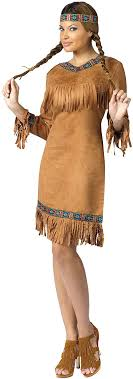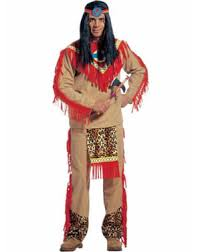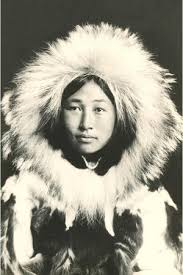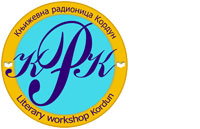|
|
|

INDIANS AND ESKIMOS OF CANADA  | Simo Jelača | |
| |
detail from: KRK Art dizajn
INDIANS AND ESKIMOS OF CANADA(Brief history and traditions)
Indigenous people and Eskimos of Canada originate from Siberia, China and Japan. They migrated to Canada between 50,000 and 30,000 years ago, crossing the Bering Sea, which was then frozen. Life on Canadian soil was founded in Alaska, the Yukon Territory and the North Western Territory.For centuries, until the immigration of Europeans, they retained their customs and language. All their tribes had zero blood type (0). Blood groups (A), (B) and (AB) did not exist in Indians and Eskimos. Blood group (A) originates from the Caucasus, and group (B) from Africa. Living in different climatic conditions, they also developed their own appropriate culture of living. Indians consider themselves idealists, and Europeans materialists. With the arrival of the Europeans, the Indians began a fur trade with them. The French were friendly to the Indians, while the English were very cruel to them. The Indians initially accepted the English as friendly, and the English brought them smallpox and the flu, halving them in number. The Indians were not happy to accept the European religion either.Since the Indians were the first to inhabit the lands of Canada, they were therefore called the "First Nation". When Columbus arrived in America, he thought he had arrived in India, and he called the natives Indians. Since the immigration of the Indians to America, they have focused exclusively on hunting and fishing, and those who inhabited the prairie lands have hunted bison. There were about six million bison in Canada then, and today there are only enough to survive as a species. The meat of the buffalo was used by the Indians as fresh and dried in the sun for the winter, and the skins were dried and crucified on circular frames. Dried skins were used to make clothes. During the drying of the skins, they were brought into the wigwams at night. From agricultural crops, they grew corn, beans, zucchini and tobacco. They gathered forest fruits and picked berries. The settlements were grouped by family groups, mostly living in wigwams. They got married quite early, girls between the ages of 13 and 15, and boys between the ages of 15 and 20. They also had a lot of children, but their mortality rate was quite high. In the event of the wife's death, the husband continued to live with her sister, if she had one, and vice versa, in the event of the husband's death, the wife continued to live with his brother.The clothes of the Indians and Eskimos were made of animal skins, and the needles were made of bones. The Inuit lived in tents in the far north in the summer and in the needle in the winter. A man with Eskimos could only get married when he knew how to make an igloo. Indian Chiefs made decisions at joint gatherings, Noble Assemblies. The Indians and Eskimos developed their own culture and art of making pottery, baskets, canoes, stone, wood and bone. They used drums and flutes as musical instruments. Mixed-blood Indians, a European father and an Indian mother, are called "Metis", as a newer race of Indians. The first Metis in Canada and America have been mentioned since 1600, and their number has increased significantly since then.The Eskimos, like the Indians, immigrated from the same area, across the Bering Sea, and they live in the far north of Canada. They are very tolerant peoples, their language is Eskimo-Alent and Inuktitut. Their settlements are grouped in about 500 to 1000 inhabitants. Due to the great cold, there are almost no trees growing there, only bushes. Eskimos mostly hunt seals, deer, caribou, fish, and even bears. They are very inventive in the processing of stone, leather and wood. Eskimos had no contact with Europeans until the 18th century. Today, a large number of Eskimos live in modern settlements, work for a salary, but still hunt, but use snowmobiles and motor boats. Their diet is mostly based on venison and fish.With the arrival of Europeans, about 60,000 Eskimos lived in Canada, but the Europeans soon halved them, due to the diseases they brought to them, primarily smallpox and the flu. Today, just over 41,000 Eskimos live in the Northwest Territories. There are about 44,000 of them in Greenland and about 1,000 in Siberia. Eskimos, like the Indians, live mostly in tents and in winter in igloos. Modern Canadian Eskimos speak English today, Danish in Greenland and Russian in Siberia.Indians in Canada live in 630 settlements and speak 50 tribal languages. The Algonquin Indians live in areas from Newfoundland to the rocky mountains. Most of them are around Lake Manitoba and around the Red River. The eastern part of the Northwest Territories (NWT) is inhabited by Iroquois tribes. They are in the confederation with the Mohawk, Oneida, Onondaga, Kajuga and Seneca tribes. The Dene Indians live predominantly in the Northwest Territories, from Alaska to East Nunavut. They speak Dogrib language. According to the linguistic group of languages, they belong to the Athabascan people. The Den Indians have five tribes: the Dogrib, the Chippewayan, the Southern Slavery, the Northern Slavery, and the Luse Loucheux. The Cree Indians live mostly in Winnipeg, have black eyes, their women are very beautiful and charming, and they are very proportionate. The Cree Indians are very hospitable and good-natured. They are extraordinary masters in making canoes.- The tragedy of the Indians began around 1800, with the mass immigration of white people from Europe, during which the white man brought them alcohol and diseases.- Of the well-known Indian chiefs, Shawnee Tecumseh (1768-1813) is most often mentioned, a Cree Indian by blood, he became a great war leader in the war during the American Revolution of 1812.- The Indians exercised their first rights in 1755.- The first president of Canada, John McDonald, founded the "Mountain Police" in 1873, which the Indians accepted with confidence.- 1876 The first Indian Act was established in Canada.- The rights of Indians are guaranteed by the constitutional act of 1951b.- Since 1978, the Dan Indians have gained the right to run for positions in the federal government of Canada.Today in Canada 54% of Indians live in urban areas. Most of them are in Winnipeg, about 69,000 (about 10% of the population of Winnipeg). There are over 52,000 of them in Edmonton, over 40,000 in Vancouver, about 27,000 in Toronto, etc. But still a large number of Indians live in the reserves, over 400,000. Indians in Canada do not pay the tax. Not far from Saskatoon is the Wanuskeween Museum, which displays exhibits dating back more than 10,000 years. The Cree Indians consider this place "Life in Harmony". The most frequently used languages of the Indians are: Algonquin, Atapaskan, Eskimo-alent and Iroquois.  
Characteristic images of Indians and Eskimos
|










